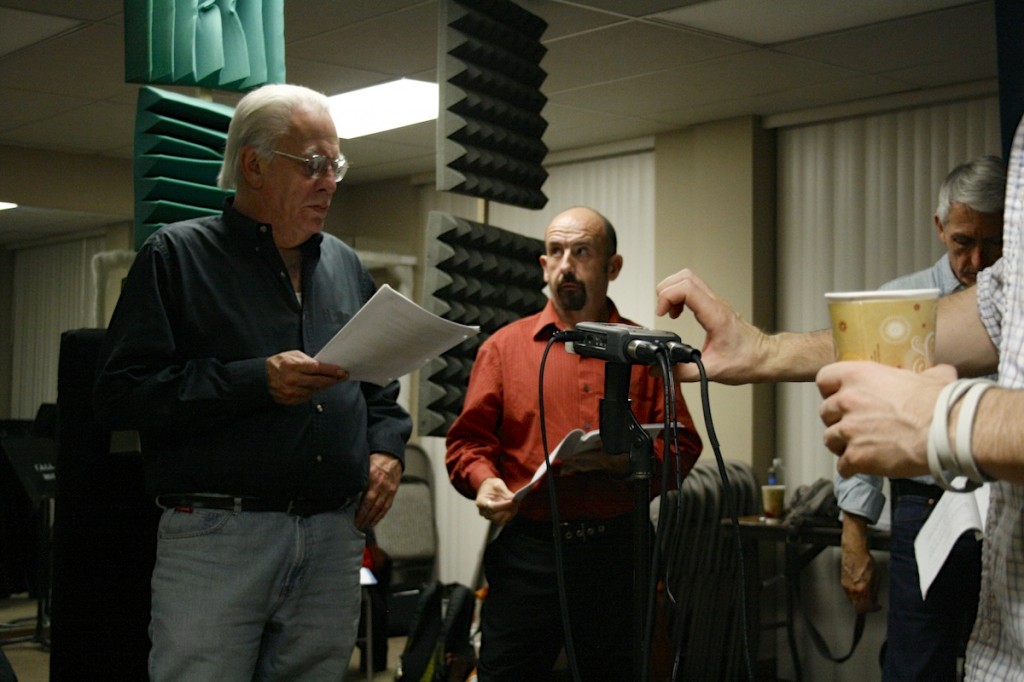I made an important discovery recently, one that will turn upside down my initial conception about how to control who speaks from where along the stereo spectrum. Meaning, how far to the left or to the right a character speaks from in the stereo mix.
But first an update. If you have checked back to this website over the past couple years, you’ve seen that the blog has been dormant. It is true, what they say, that you can’t serve two masters. I serve four myself. The one that takes up most of my online time is the Downey Arts Coalition, an effort I’ve taken on to revitalize the arts and culture scene in my hometown. The others being work and family.
That’s not to say that The Man Who Was Thursday isn’t going anywhere, it is. Working with other (unpaid) editors did not turn into anything productive. After all, it is my creative ambition to tell this story, and thus is my burden to do the work, in the absence of paying professionals.
In small increments the project continues to move forward a little bit at a time, and in another year there may be some better news that includes releasing some episodes.
Back to the stereo soundscape. The entire project was “blocked” for audio, to borrow a theatre term. Blocking is the way that actors move about the room during a scene. Actors who are entering or exiting, or talking from across the room, are recorded further away from the microphone. The actors move throughout the stereo spectrum left to right depending on the action of the scene.
My initial conception about an audio play is that it might work similar to shooting a film. Where you place the actors in relation to the camera, as well as where in the frame they land conveys certain subtle cues to the audience as to how they feel about a character or a situation. For example, if you want a character to feel trapped, you place them in the center of frame with two others around them, blocking them visually from the left and right sides of the screen.
It’s also suggested that each side of the screen frame has an assigned emotion to it. Because our culture reads from the left to the right, the eyes will often start scanning the filmed image from left to right. The left side therefore may have an instable feeling, and the right side of screen has more strength or confidence, because your eyes naturally land and rest there.
Going on this, I would do the same for stereo audio. The characters would either be on the left or right based on their ability to be in control of the situation in the scene. If Gabriel is challenging someone, he begins on the left ear, then slowly ends up more on the right ear as he gains the upper hand.
I often listen to what scenes I’ve put together in the car, as I spend a lot of time commuting, and a car is the primary venue for listening to podcast audio. What I realized is that listening to an audio podcast is often a solitary, personal experience. Your subconscious can handle the driving and allow your mind to become absorbed in what you are listening to on the radio. This works for The Man Who Was Thursday because the audience literally is in the head of Gabriel Syme from the first moment, as he tells the story from his perspective.
Point of view or perspective in this case becomes the overriding language of how the audience listens. In your gut, at least in America, I think that we put ourselves in the shoes of the character on the left. That’s obvious in the car, as the driver’s side is on the left. Putting the sound of the main character on the left helps the audience feel like they’re in his shoes. A person approaching on the right sounds foreign, especially in the car, as we’re used to the left speaker dominating over the right.
This will take some careful consideration at the mixing stage, where my initial plan is to listen to how the characters move across the stereo spectrum as we recorded it, then match it as I add in the two shotgun microphones (typical film-shoot boom mics) that help isolate the individual voices.
If I want someone to sound further away, I raise the volume of the stereo room mics, and lower the shotgun mics. If a close, intimate scene is needed, I can drop out the room mics and stay with the shotgun mics.
I’ll post some examples soon to illustrate.
Thanks for sticking with the project!

